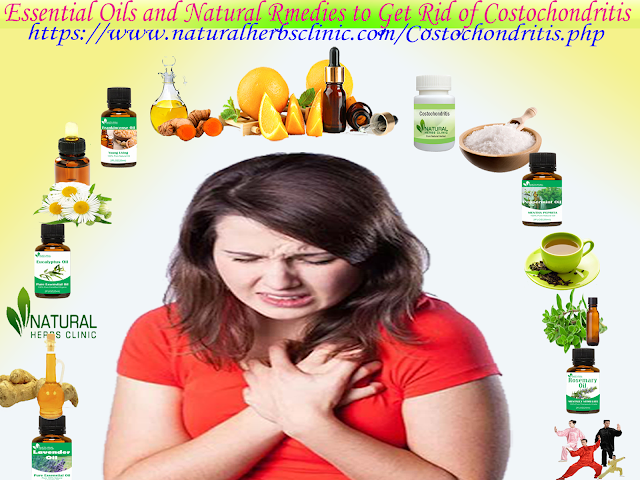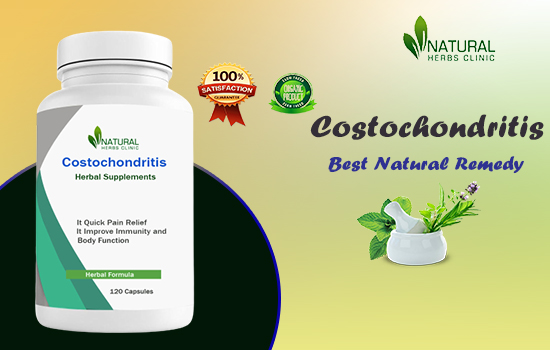10 Essential Oils for Costochondritis + Other Natural Remedies
Costochondritis is a term used to describe inflammation of the cartilage which joins the ribs to the sternum (breastbone). The inflammation causes localized chest wall tenderness and pain which can be reproduced by pushing on the involved cartilage in the front of the rib cage.
Costochondritis is one of the most common causes of musculoskeletal chest pain. The most common sites of pain are the 4th, 5th, and 6th ribs.
Note – pain caused by costochondritis might mimic that of some heart conditions, especially a heart attack.
According to an article published in the journal American Family Physician, inflammation most usually affects people older than age 40. It usually affects women more than men. An estimated 13 to 36% of people who seek emergency medical attention for chest pain are experiencing this condition.
Symptoms
The pain associated with the condition typically:
Worsens when you cough or take a deep breath;
Affects more than one rib;
Is aching or pressure-like;
Is it a sharp pain at the front of your chest wall?
Note – there is a variation of costochondritis called Tietze syndrome, a condition that causes swelling of the rib cartilage and pain associated with costochondritis. Tietze syndrome is also caused by inflammation, however, it tends to cause swelling at the costosternal, costochondral, or sternoclavicular joints.
When to Call the Doctor
If you have already been diagnosed with the condition, call your doctor if you have any of the symptoms:
Sharp pain with every breath;
Pain which continues or gets worse after taking pain medicine;
Any signs of infection like – redness, pus, or swelling around the ribs;
A high fever;
Trouble breathing.
Complications
This pain can return during everyday tasks or physical exercise, therefore, the condition can negatively impact a sufferer’s quality of life.
Causes
It is not known precisely why the inflammation occurs, however, in some cases, it’s been linked to:
Fungal infections – albeit rare, these infections may lead to the condition;
Wear and tear – your chest moves in and out around 25 times per minute, and, over time, this can lead to discomfort in these joints;
Viral infections – the strain caused by excessive coughing or inflammation brought on by respiratory tract infections may prompt the condition;
Tumors – cancerous and noncancerous tumors can cause inflammation;
A physical strain that occurs from sudden exertion or repeated exercise;
Bacterial infection – this is commonly seen in individuals who have had any type of surgery done on their upper chest or used IV drugs;
Fibromyalgia – it is a condition that affects the soft tissue and muscles that may present as feelings of pain in the rib cage and chest wall;
An injury to your chest.
Risk Factors
You may be at a higher risk for this condition if you:
Have reactive arthritis (a form of inflammatory arthritis which develops in response to an infection in another part of the body);
Have ankylosing spondylitis (a long-term condition that affects the spine);
Have rheumatoid arthritis;
Are frequently exposed to irritants;
Have allergies;
Perform manual labor;
Participate in high-impact activities.
Diagnosis
A diagnosis of this condition can typically be made by reproducing the pain by pressing on the affected area and by assessing the nature of the symptoms. Also, tests may include:
Blood Tests;
An electrocardiogram (ECG) is a tracing of the heart’s electrical activity;
A chest x-ray – it can detect infection or cancer.
Treatment
The condition often goes away within several weeks, however, in some cases, it may require treatment.
Usually, painkillers like codeine or paracetamol are recommended as well as ibuprofen (an anti-inflammatory medication that is used for treating fever, pain, and inflammation).
Other medications recommended for this condition include the following:
gabapentin (Neurontin) – it is a prescription drug that has been used to treat seizure disorders and nerve damage as well as for controlling chronic pain;
amitriptyline – it is a tricyclic antidepressant, that has been known for helping to control unwanted pain.
Note – for people who are not responding to anti-inflammatory medication and painkillers, local anesthetic medicines or injections of steroids may be used.
Here Is A List Of 10 Essential Oils For Costochondritis:
#1 Frankincense
This essential oil is a Natural Treatment for Costochondritis and other pain-related conditions that affect the joints, muscles, and tendons due to the fact that it can inhibit the production of key inflammatory molecules.
#2 Rosemary
It is a natural painkiller and aid with joint pain due to its anti-inflammatory and analgesic properties.
#3 Ginger
The remarkable anti-inflammatory action of ginger essential oil is effective in alleviating numerous inflammatory conditions. Ginger essential oil is in the large number used in Home Remedies for Costochondritis.
#4 Chamomile
Chamomile essential oil has very helpful effects in Herbal Remedies for Costochondritis. It offers anti-inflammatory and analgesic properties due to its content of flavonoids.
#5 Lavender
It has long been used to reduce anxiety, pain, and depression.
Note – lavender essential oil may be applied topically, inhaled, or added to a warm bath.
#6 Marjoram
When rubbed on the affected area, marjoram essential oil relieves joint pain and relaxes the muscles. Furthermore, it provides a relaxing and soothing effect that helps to relieve pain and stress.
#7 Turmeric
The main ingredient in turmeric, curcumin, has become known as an amazing anti-inflammatory agent. Utilize turmeric essential oil in Herbal Products for Costochondritis to get rid of the pain.
#8 Orange
The essential oil of orange fruit possesses anti-inflammatory, antiseptic, and antidepressant properties. It can be helpful Herbal Treatment for Costochondritis works properly without any side effects.
#9 Peppermint
It has excellent anti-inflammatory attributes along with an anesthetic effect which helps in relieving pain in cartilage and joint conditions. Peppermint is known globally for its use in Costochondritis Natural Treatment and many other diseases.
#10 Eucalyptus
A few compounds in eucalyptus Essential Oil have been shown to reduce swelling, inflammation, and pain.
Home Remedies
#1 Green Tea
Green tea is one of the useful ingredients used in Natural Remedies for Costochondritis and many other diseases. Green tea contains polyphenols, natural compounds which may help to reduce pain and inflammations. Additionally, recent research has concluded that epigallocatechin-3-gallate (an antioxidant in green tea) blocks the production of molecules that cause joint damage.
#2 Epsom Salt Baths
An Epsom salt bath is traditionally used as a soaking agent to bring relief from muscular stiffness and pain. Also, it can promote detoxification all over the skin. Use two cups of Epsom salt in a bath of warm water at a temperature of 38°C (102°F).
Note – these baths are safe enough to take as frequently as you’d like for half an hour at a time.
#3 Tai Chi
Tai chi is a Chinese martial art that descends from qigong and uses smooth movements to achieve a state of relaxation.
Regular practice of tai chi is beneficial for people with osteoarthritis and joint pain, according to a study that was issued in” Arthritis and Rheumatism.”
Visit Natural Herbs Clinic for further details about home remedies and Herbal Supplements for Costochondritis treatment and recovery


Comments
Post a Comment